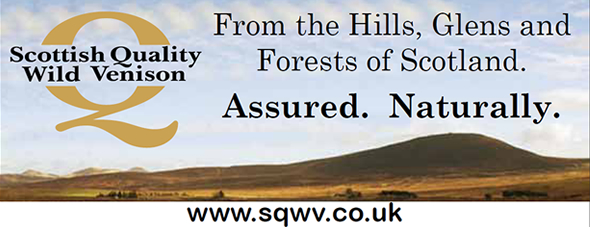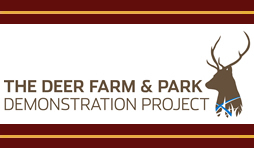Venison comes from the four wild deer species found in Scotland: roe deer, red deer, sika deer and fallow deer.
Roe deer and red deer are native species; they colonised Scotland naturally after the end of the last glaciation around 10,000 years ago, and wild populations have survived in Scotland since then. Sika and fallow deer have both become established following introduction.
The red deer is the largest native land mammal in the UK and is found predominantly in the open hill range, characteristic of much of upland Scotland, also using woodlands and plantations, particularly for shelter.
Although red deer may be the most recognisable species, roe deer increased in numbers hugely during the 20th century to become the most widely distributed species across Scotland – mainly woodland dwelling and found throughout mainland Scotland including around urban centres.
Sika and fallow deer have become established as a result of deliberate releases and escapes from deer parks. Fallow deer were introduced from the Mediterranean to England possibly during the 11th and certainly by the 12th centuries, and to Scotland by the 13th. They occur in Scotland mostly around areas where they were originally kept in captivity. Sika deer were introduced from Japan and East Asia into UK deer parks in the 19th century and the earliest records of their escape from captivity date from the 1920s. They are more widespread than fallow, with populations spreading in the south, west and north of Scotland.
With no natural predators in Scotland (since the extinction of the wolf), wild deer populations will increase relative to the carrying capacity of the ground over which they range. Deer therefore require to be managed because of their impact on other land uses and land management objectives. They can cause damage by grazing, browsing and trampling, or impact on the public (such as road traffic accidents).
At a national scale the Scottish red deer population is ‘in balance’ with numbers broadly static for the last 20 years, and with a declining trend. Indications suggest however that numbers and distribution of roe deer are expanding, and sika deer also continue to expand their range. Fallow deer numbers remain steady in isolated populations.
Wild deer also need to be managed to maintain a healthy population in balance with their habitat and the land use of the area where they live. The voluntary Deer Management Group system is established across much of the red deer range to promote and undertake collaborative management. ‘Taking’ of wild deer is governed by open and close seasons that are different for each species and each sex. However, because of these differences, and also because deer that damage crops and forestry can legally be shot out of season under a General License, it is possible for wild venison to be sourced all year round.
A economic study (PACEC 2016) commissioned by the Association of Deer Management Groups into financial aspects of deer management found that the deer sector contributes an estimated £140 million each year to the Scottish economy and supports 2500 full time jobs.
Taking into account related goods and services this activity makes a significant contribution to the rural economy, often in areas where employment and economic opportunity is relatively limited.
For more information see NatureScot, and the Association of Deer Management Groups



